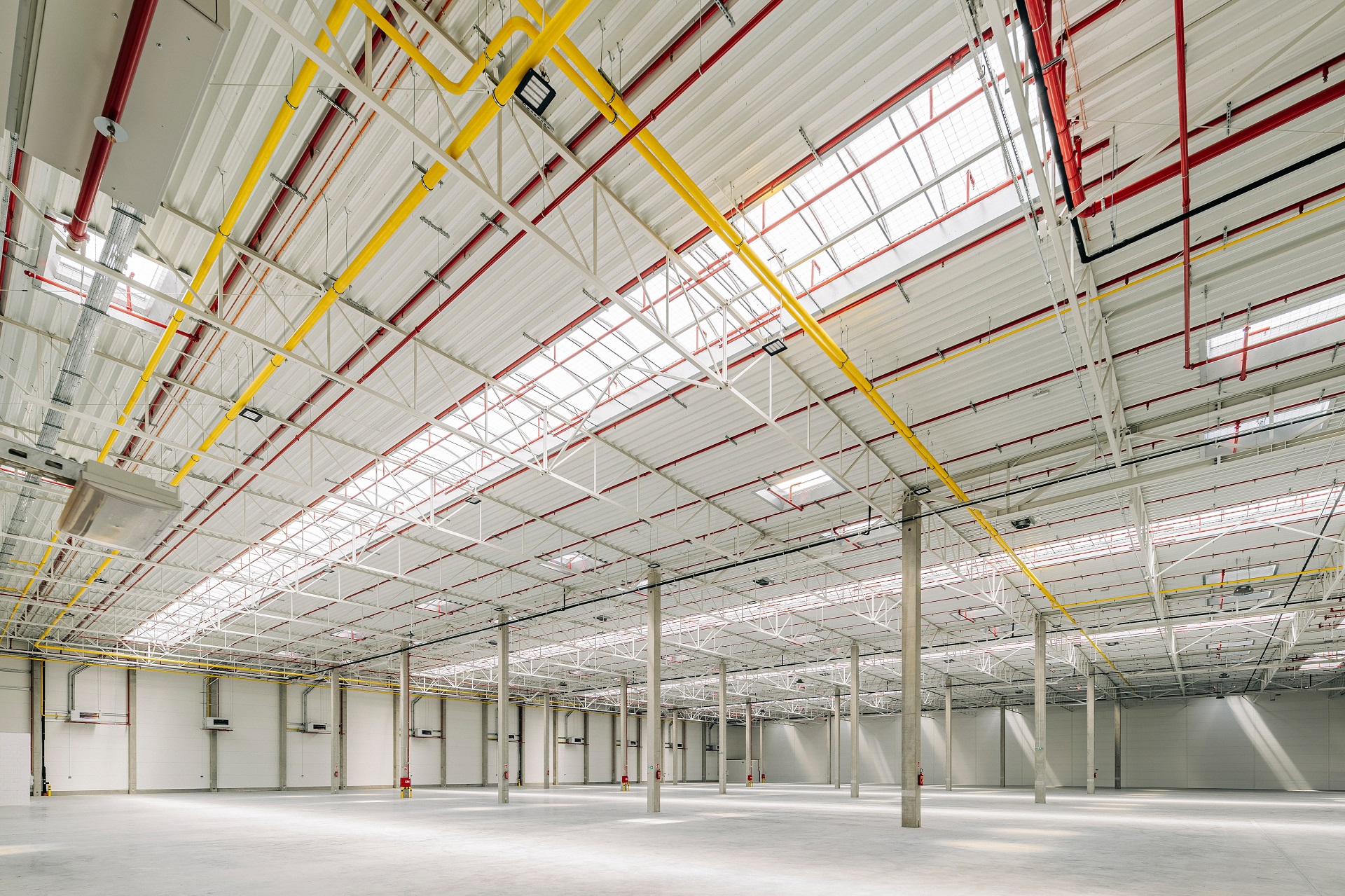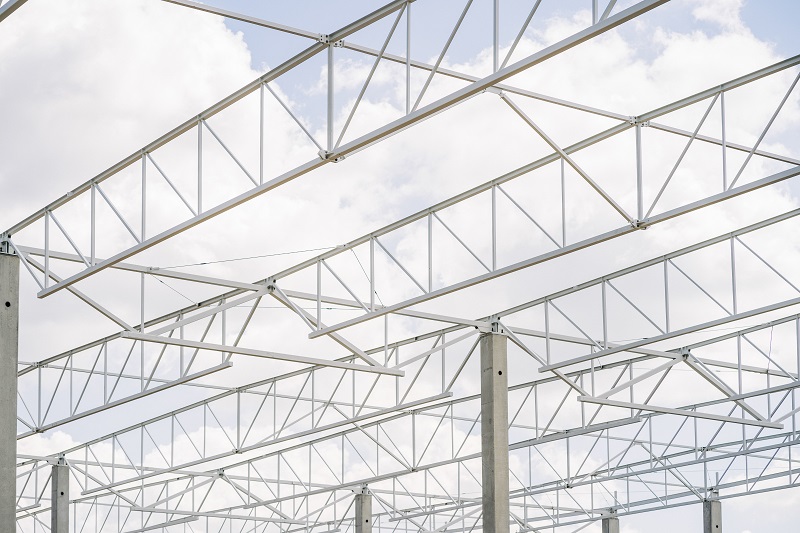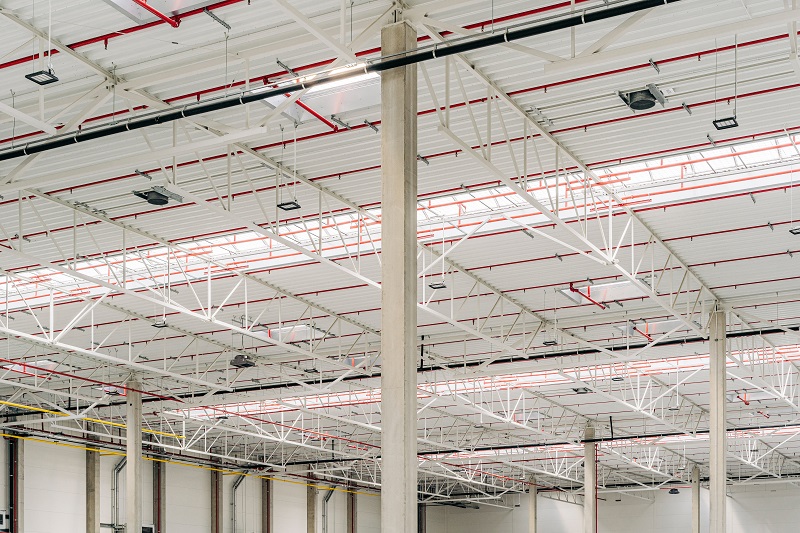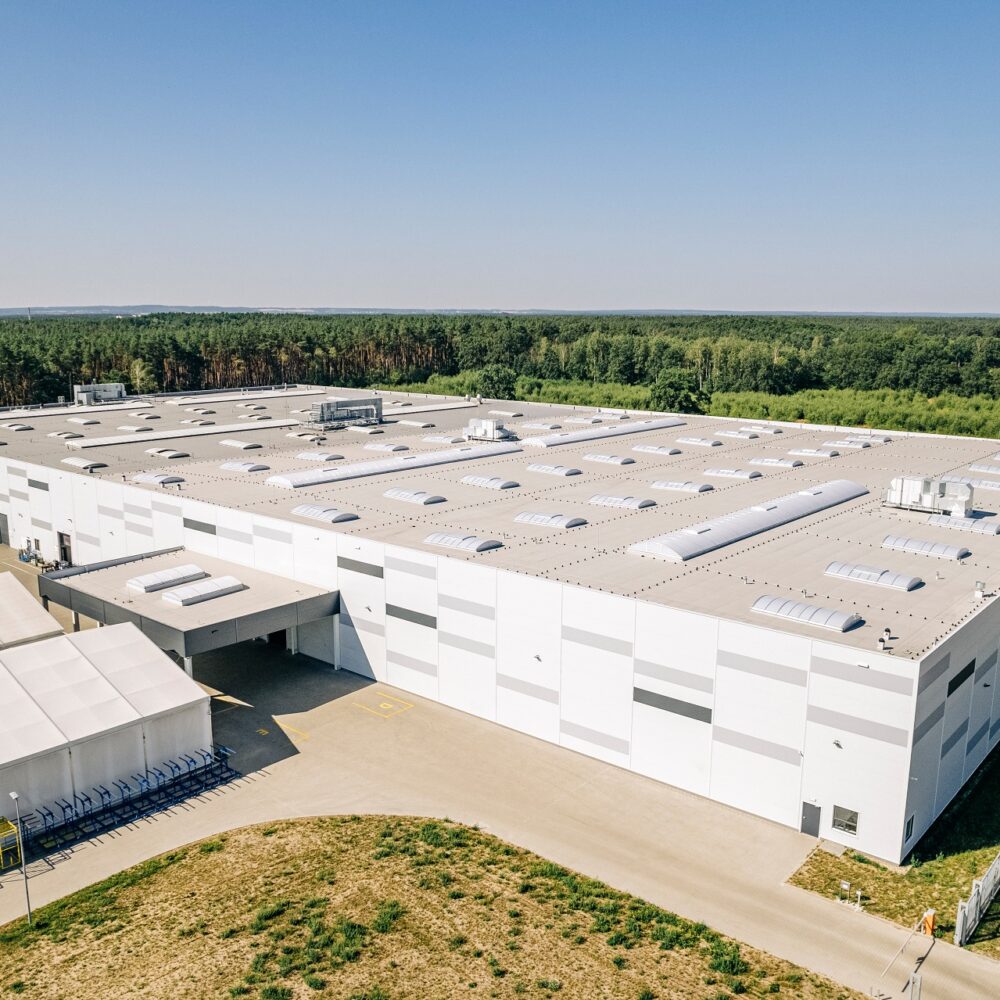
Types of steel trusses
A truss is a bar system that consists of an upper chord, a lower chord and trussing in the form of posts and cross-braces. The trussing connects the top and bottom chords together. The design of a truss involves the optimal selection of the profiles of its members in order to obtain the greatest possible load-bearing capacity and stiffness. The top chord is usually designed from HEA or HEB wide-flange I-beams. This is related to the ease of supporting the purlin on the truss. Bottom chords are also made of HEA or HEB profiles, but hollow sections (square tubes, rectangular tubes) can also be used. It is convenient to design the trusses (posts and cross-braces) from round or square hollow sections.
The design of a truss is closely related to its span and its height. The optimum height of a truss is assumed to be 1/6 to 1/12 of its span.
Two basic types of steel trusses can be distinguished by the number of planes in which the supporting bars are present:
- flat (the axes of all bars are in one plane),
- spatial (the axes of the bars lie in three or more planes).
It should be added that spatial trusses can be analysed as a set of plane trusses.
Focusing on planar systems, different types of trusses can be distinguished using the geometric arrangement of its members and the shape of the roof slope as criteria for division:
- trusses with parallel chords (mono-pitched or flat roofs),
- triangular trusses (pitched roofs),
- double-trapezoid trusses (these are the most commonly used steel roof trusses),
- parabolic trusses (bridge structures).
Steel trusses can also be subdivided according to the type of trussing:
- N-type truss (posts and cross-braces present),
- V-type truss (cross-bracing only),
- W-type truss (formed by adding posts to a V-type truss),
- X-type truss (posts and cross-braces),
- K-truss (posts and cross-braces).
Roof steel trusses are the most common group of trusses. They allow long distances to be covered without the need for additional support posts. The truss in the hall is the main load-bearing element (next to the columns) and provides support for the purlins and roof sheathing elements. Different types of flat trusses arise from the need to fit the roof slope, the roof pitch, the need to route utilities or to provide the right height for the hall.
An ideal truss is the one in which the axes of the truss members and chords intersect at the same point (without eccentricities) and the loads are transmitted exactly at the nodes as concentrated forces. This means that only axial forces occur in the bars, with no bending moments or shear forces. In reality, of course, these two additional forces, even of negligible magnitude, will be present if only through the dead weight of the structure.

The use of trusses in construction
Trusses are commonly used in construction. This is due to the great ease with which they can be given any geometric form. Different types of steel trusses are used which can be subdivided according to the contour, static scheme or the method of trussing. Flat trusses are used as roof girders, frame rafters and beams. Flat truss is less commonly used as a roof purlin.
Spatial trusses are used as high voltage poles, radio and television towers and masts. Articulated truss is used in the power industry in the form of a conveyor belt flyover. A space truss can also be used as an extended two-, three- or even four-branch column.
Reinforced concrete truss is a much less common solution in industrial construction than steel trusses. However, due to their very high durability and load-bearing capacity, as well as their fire resistance, reinforced concrete trusses are used in high-rise construction or bridge-building.
The use of steel trusses is also so common because of their quick and easy installation.

Prices for steel trusses
The prices for steel trusses depend on a great many factors. The main element influencing the price of trusses is the grade of steel used and the profiles used as truss members. It is clear that using a higher strength grade (e.g. S355) will cost more than making the same component from a less durable steel (e.g. S235). Likewise, by choosing to use round hollow section trusses, you can obtain a lower price than by making the same element of the truss structure from square or rectangular tubes. This is a direct result of the price per kilogram of steel of a given grade and the price of a given profile.
Another factor influencing the cost of manufacturing a truss is the truss structure itself and, more specifically, its geometry. A steel truss with parallel chords is economically justified due to the fact that all posts and cross-braces are of the same length. This standardises the routing, cutting, welding and also the shaping of nodes. Also, the choice of the type of trussing can affect the cost of making a truss. N-type trussing is advantageous because the longer bars (cross-braces) are tensed, while the shorter bars (posts) are compressed. This has an impact on material consumption. V-type truss is characterised by the simplicity of shaping the nodes and the repeatability of the cross-braces which reduces the price of prefabrication.
It should be noted that industrial construction is an area where steel trusses are particularly frequently used due to the relatively high loads involved and spans which very often exceed the conventional limit of 20 m. Above a span of 20 m, steel truss structures are assumed to have a better mass-to-load ratio than plate girders.



